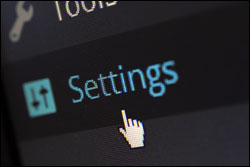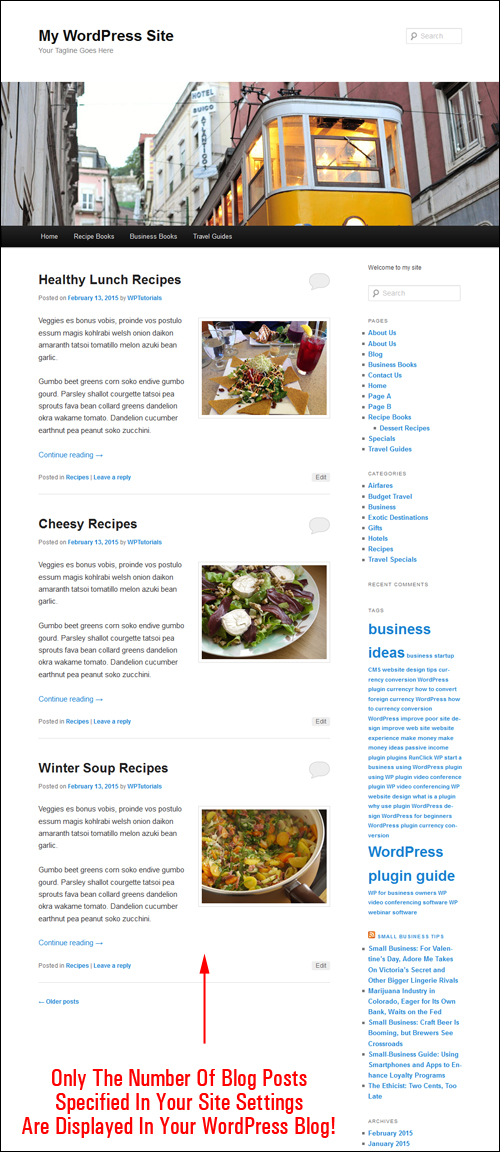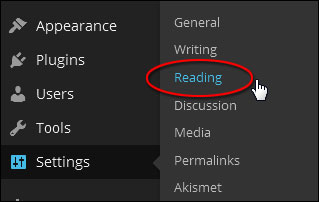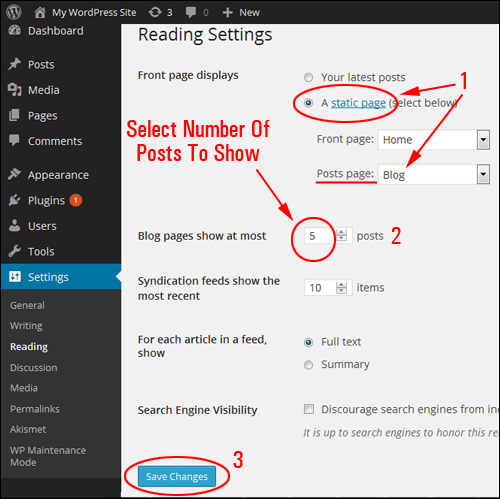 As we’ve discussed in other posts, by default, WordPress treats your website as a ‘blog’ and displays your newest post entries on the home page, unless you fix a page as the home page.
As we’ve discussed in other posts, by default, WordPress treats your website as a ‘blog’ and displays your newest post entries on the home page, unless you fix a page as the home page.

In another post, we also show you how to create a blog page to show your most recent blog post entries.
Whether you choose to make your blog posts on your main page or your blog page, you can set a specific number of blog posts to appear on these pages (e.g. ‘1’, ’4’, ’10’ etc.)
Your website will then display your most recently published articles on your blog page up to the maximum number of blog post entries you have specified, even if your WordPress website contains more blog posts than the number of posts set to display …

Being able to specify the number of blog posts will display on your blog page is useful.
For example, you can set your blog to display only the latest post that you have published. This can be handy, if, for example, you are promoting a different time-sensitive offer each week, a ’book of the month’ type of offer, publish the latest results of your sports team, post an upcoming event, set up a weekly community page for announcements, etc.
You can also use this great feature to fill an ugly space on your blog if your sidebar menu is too long …

Whatever the reason may be, WordPress gives you the flexibility to specify the number of blog posts to show on your blog page.
Let’s show you, then, how easy it is to specify how many blog posts to show up on your WordPress blog.
How To Set The Number Of Blog Posts To Display On Your WordPress Blog
Through its content management system (CMS), WordPress allows you to choose how many published posts you would like displayed on the blog page of your website.
![]()
How many blog posts you would like to display is entirely up to you. WordPress doesn’t limit this amount …

Note: Pick a sensible setting that won’t overload your page as the entries load on your site. You can always raise or lower the number of posts displayed on your blog page.
To set how many published blog post entries you would like to have displaying on your blog page web site, go to your WordPress navigation menu and choose Settings > Reading …

Configure your settings in the Reading Settings section as per the screenshot below:
How To Specify The Number Of Posts Displayed On The Front Page
If you are using your site as a blog (i.e. the default installation option), where the front page displays your latest post entries, then set your options as shown below:
- Front page displays: Set this to Your latest posts
- Blog pages show at most: X posts (where ‘X’ is the number of items that you want showing – i.e. ‘1’, ‘3’, ‘7’, ’12’ etc.)
- Click on Save Changes when finished to update your settings…

To Edit The Number Of Posts Displayed On The Blog Page
If you are using your WordPress site as a website, where the main page displays a fixed page and your most recent blog posts show up on a separate blog page, then set your options as described below:
- Front page displays: Set this to A static page, then select Posts page: > your Blog Page from the drop down menu
- Blog pages show at most: X posts X posts (where ‘X’ is the number of blog post items that you want to display – e.g. ‘1’, ‘3’, ’10’, ’15’ etc.)
- Click on Save Changes when done …

Now, when visitors land on your website, they will see your newest blog posts showing either on your home page or blog page, as per the settings you have specified …

![]()
To learn how to change the length of your post excerpts, see the tutorial below:
Congratulations! Now you know how to set the amount of blog posts you want to have displaying on the blog page.
Related Posts
If you are new to WordPress, you may also find the following posts useful:
- How To Set Any Page In WordPress As The Static Home Page
- How To Create A Blog Page To Display Your Latest Blog Post Entries In WordPress
***
"This is AMAZING! I had learnt about how to use WordPress previously, but this covers absolutely everything and more!! Incredible value! Thank you!" - Monique, Warrior Forum